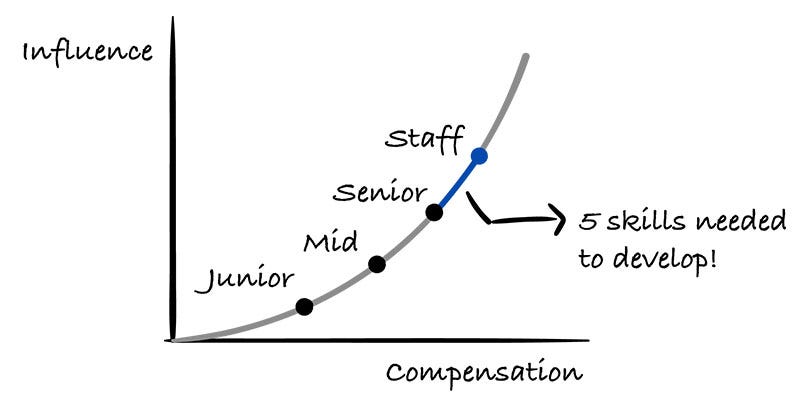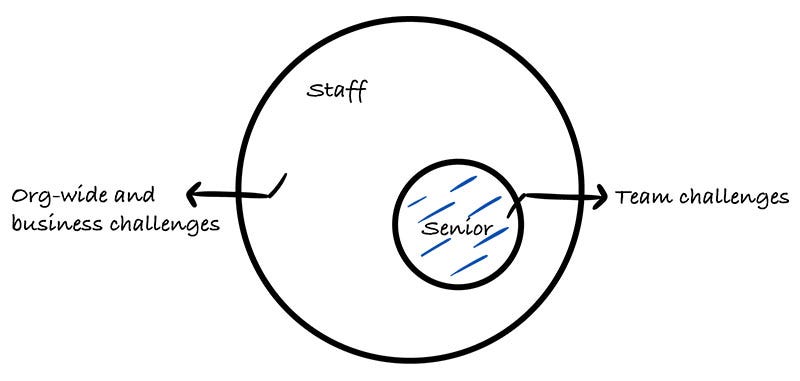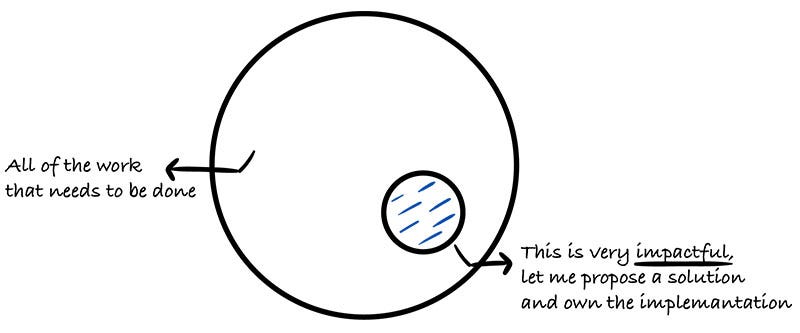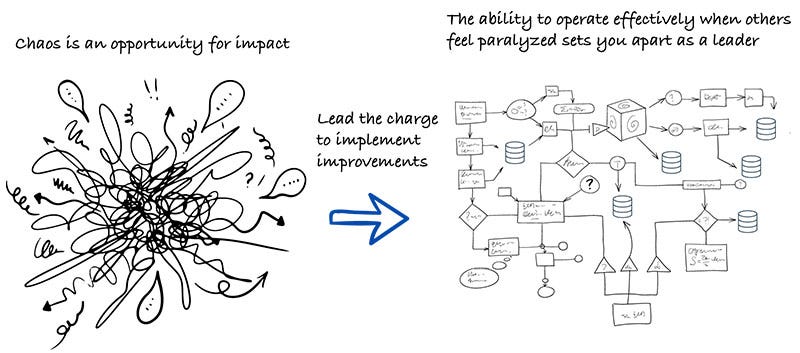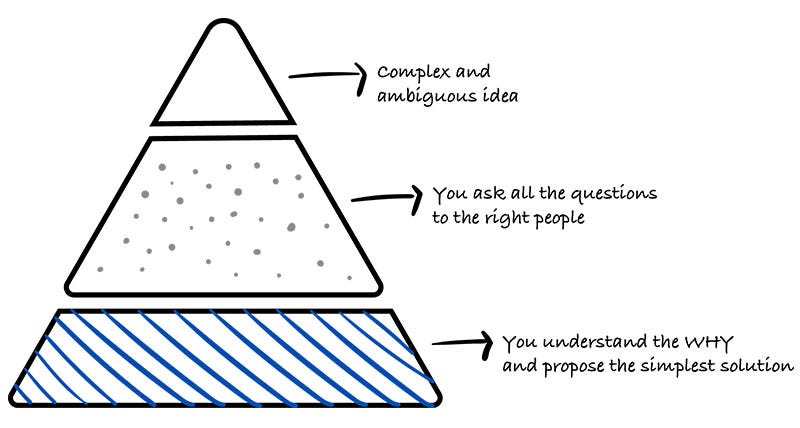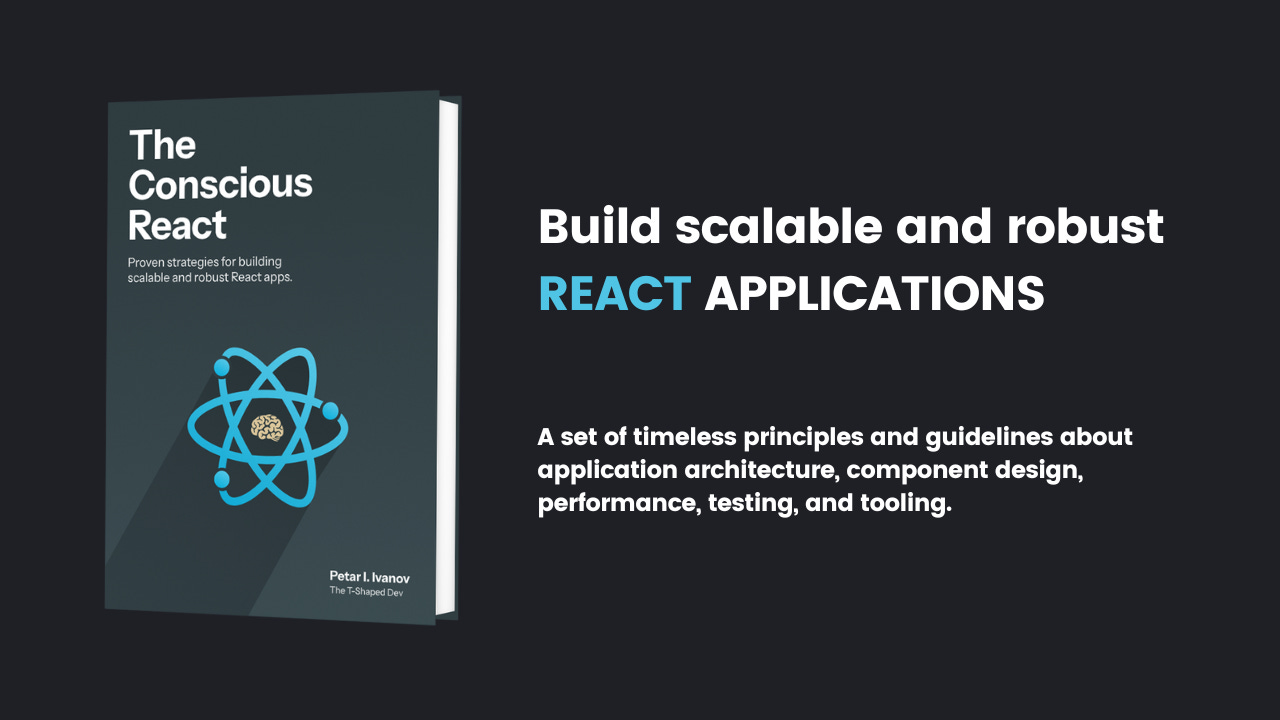5 skills to develop to grow from Senior to Staff Engineer
- Gregor Ojstersek and Arpit Bhayani from Engineering Leadership <gregorojstersek@substack.com>
- Hidden Recipient <hidden@emailshot.io>
5 skills to develop to grow from Senior to Staff EngineerStart your 2025 by focusing on the skills needed to grow to Staff level!Senior Engineer to Lead: Grow and thrive in the role (15 out of 50 spots left)Start your 2025 the right way by enrolling in the course → we start on January 21st. I’m already excited for it! In the course, we particularly focus on the development of much needed people / communication and leadership skills in order to grow from engineer to leader! This is the first cohort, I’ve decided to put a cap of 50 seats available, since the cohort is filling fast. Only 15 seats left! You can enroll here: Looking forward to seeing some of you there. Let’s get back to this week's thought! IntroAs I have mentioned in the Wednesday’s paid article called Become a great engineering leader in 2025, my predictions for 2025 and beyond are that engineering roles are just going to get broader and more blurred between each other. The expectation will be to be good technically and also good in product/business, leadership and communication. And growing in the IC path (Staff+) is exactly aligned with all of the things mentioned above. You don’t just need to be technically great, but also good at understanding the product/business, have leadership skills and your overall communication needs to be on point. In today’s article we are diving deeper into what particular skills you need to develop in order to grow to Staff level. To ensure we get the best insights, I’ve teamed up with Arpit Bhayani, an engineering leader, creator of DiceDB and ex-Staff Software Engineer at Google. Before we get into Arpit’s insights, let me say a few words about the mindset shift needed in order to grow from Senior to Staff. Growing from Senior to Staff requires a mindset shiftThe more you grow in the IC path, the more you need to zoom out from team challenges to org-wide and also business challenges. You are not judged by your individual contribution only, but you are judged by the impact and the success of the projects that you lead. It’s all about being a multiplier for others and the organization.
As a manager, I see Staff Engineers as very reliable people who I can count on to make things happen without my excessive provision or needing to interfere. Now that we know and understand the mindset shift needed, let’s get into the skills to develop to take you from Senior to Staff. Arpit, over to you! 1. Extreme OwnershipOne of the most important traits that I believe you should hold if you want to transition to Staff Engineer is - extreme ownership. It means going beyond solving tasks to driving outcomes. Here are a few things that can help you demonstrate the same. Don’t wait for instructions. Seek out areas where you can contribute, identify gaps, and take ownership of resolving them. Demonstrate the ability to recognize what’s needed and act decisively. Find your projects, pitch them, get them to prioritize, and execute. Extreme ownership is about keeping everybody aligned and on the same page. So, keep sharing progress updates proactively, and flag potential risks early, without people having to ask you for the status. This minimizes miscommunication and builds trust in your ability to lead. Acknowledge the collective achievements of the team, especially highlighting individuals who went above and beyond. Celebrating others' contributions builds a culture of collaboration and shows maturity in leadership. One of the proxy metrics for extreme ownership, that I have tracked over the years, is the number of follow-ups from your manager. Over time, it should tend to zero. 2. Ruthless ExecutionTo grow into a Staff Engineer role, ruthless execution is a critical skill. It’s about driving work to completion and not letting things hang. Here are a few things that will help you demonstrate the same. When you’re responsible for a piece of work, make it your mission to know its exact status at all times. Be aware of - what has been completed, what is blocked and why, estimated timelines for each, etc. This makes sure you are on top of things, no matter what. Remember, People do what is tracked. If you loosen your grip, even highly driven individuals can become complacent over time. Maintain visibility into every project you lead, but balance this with empathy - track progress to enable, not micromanage. As a staff engineer, making sure the project keeps making progress is non-negotiable. Ruthless execution is also about - keeping everyone involved aligned. So proactively keep people aligned to reduce confusion, mitigate risks, and reinforce trust in your ability to execute.
For every project I ever led, there is always one document that contains every single key detail that anyone can refer to see what’s happening. I always took it upon myself to update it. This way, I made sure I was on top of every single thing happening in the project. The granularity of details was dependent on what I was leading. 3. Sees chaos as a ladderChaos is an opportunity for impact. Rise above the noise and bring structure and clarity whenever you see an opportunity When faced with unclear situations, do not wait for someone else to set the direction. Instead, take the initiative, define the problem, identify potential solutions, and drive toward clarity. The ability to operate effectively when others feel paralyzed sets you apart as a leader.
Build the judgment to evaluate the impact of competing tasks. For instance, when there was a massive data breach at my ex-employer, Unacademy, I recognized its importance over other tasks and stepped up. I drove the entire initiative to improve the security posture within 6 months. By learning to see chaos as an opportunity, you’ll position yourself as someone who thrives where others struggle. Leaders are defined by how they perform in uncertainty. 4. MalleabilityGiven how quickly the world of tech is evolving, I would add Malleability as one of the most critical traits. Malleability is all about having a learn-unlearn-relearn mindset In a staff position, the role almost always demands having the ability to learn new domains quickly, and the mindset to thrive amidst rapid technological and organizational shifts. So, being open to questioning your past assumptions, letting go of outdated practices, and learning new stacks and paradigms is important. This ensures you remain relevant and innovative, regardless of changes in tools, stacks, or domains. 5. Non-ambiguous CommunicatorWhile you may think, Staff Engineer is an IC role, remember clear, concise, and impactful communication is the cornerstone of being successful in the role. Staff Engineers are engineers and leaders, so it is expected to translate complex ideas into actionable plans, drive alignment, and influence decisions. As a Staff Engineer, you are supposed to understand and ask the why behind a business and ensure engineers still have the broader context to connect their work to the larger impact. Essentially, being able to explain why this matters for customer experience effectively. Whether it’s verbal or written communication, you are expected to be clear and to the point. This should be reflected in your emails, proposals, or documentation that is well-organized and easy to follow. Provide enough detail but avoid unnecessary complexity. Communication is also an important tool for influencing priorities, building alignment, and driving cross-team collaboration. As a Staff Engineer, you will be required to pitch ideas in meetings and to stakeholders, justify the prioritization, and get the stuff you build adopted. Given you will often work across teams to drive larger initiatives, miscommunication can derail progress, so your role is to ensure alignment by radiating clarity and purpose. The ability to communicate effectively directly impacts your influence in the organization. Leaders trust those who can distill chaos into actionable clarity, and peers look up to those who make complex projects feel achievable. Last wordsSpecial thanks to Arpit for sharing his insights on this important topic! Make sure to check him out on LinkedIn and subscribe to his newsletter Arpit’s Newsletter. Also, check out Arpit’s courses on System Design. I highly recommend them, if you wish to get better at that! We are not over yet! The Conscious ReactMy friend Petar Ivanov has recently launched his book on how to build scalable and robust React applications. If you wish to get better at React architecture, design, and clean code, this would be a great read for you! Petar has given 50% off to Engineering Leadership readers. Use this link: The Conscious React to get it. Liked this article? Make sure to 💙 click the like button. Feedback or addition? Make sure to 💬 comment. Know someone that would find this helpful? Make sure to 🔁 share this post. Whenever you are ready, here is how I can help you further
Get in touchYou can find me on LinkedIn or X or Bluesky. If you wish to make a request on particular topic you would like to read, you can send me an email to info@gregorojstersek.com. This newsletter is funded by paid subscriptions from readers like yourself. If you aren’t already, consider becoming a paid subscriber to receive the full experience! You are more than welcome to find whatever interests you here and try it out in your particular case. Let me know how it went! Topics are normally about all things engineering related, leadership, management, developing scalable products, building teams etc. Invite your friends and earn rewardsIf you enjoy Engineering Leadership, share it with your friends and earn rewards when they subscribe. |
Similar newsletters
There are other similar shared emails that you might be interested in:
